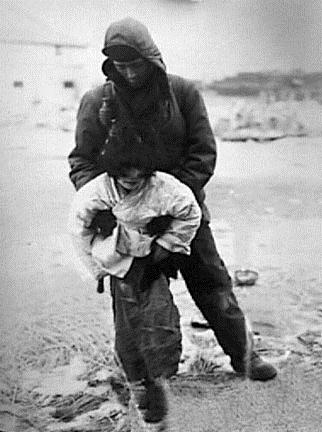The Silent Casualties of a Forgotten War
The Silent Casualties of a Forgotten War
Five-year-old Kabir was in a seemingly safe place—his own house in the remote district of Faryab—when the rocket-propelled grenade struck on an early April day.
His brother and sister were declared dead before he was driven more than 500 miles to the nearest emergency hospital in Kabul. There, his shrapnel wounds were treated and both of his legs were amputated. This wide-eyed boy, quietly staring up, has not even begun to grasp the effect that the previous 24 hours will have on the rest of his life. “This is what happens in Afghanistan,” says photojournalist Paula Bronstein. “It’s what happens in war zones. It’s nonstop carnage, these people are the collateral damage, and they’re barely making the news.”
Now in its 15th year, the Afghan conflict is America’s longest foreign war yet. Despite nearly $ 800 billion appropriated by Congress for military operations in the country—and with the continuing withdrawal of U.S. and NATO forces—the Afghan government has struggled to maintain control of the country. As factions fight for influence and power, warlordism infiltrates nearly every part of the system: American diplomats only travel by helicopter; car bombs and land mines have become an everyday occurrence; and Afghans rarely socialize in public spaces. Too many have been caught in the crossfire.
Last year, more than 11,000 Afghan civilians were killed and wounded, the deadliest on record for civilians in Afghanistan since the U.S.-led invasion 15 years ago, according to a latest UN report. Thousands are fleeing to neighboring countries including in Europe, but for those unable to leave, the horrors of war are right at their doorstep.
Since the denouement of the post-9/11 U.S. bombing campaign in 2001, Bronstein has returned each year to photograph the victims of a forgotten war. Her latest work, funded thanks to a Pulitzer Center Grant, documents the survivors of suicide bombs, mines and gunshot wounds at various wards at the Orthopedic Center and the Emergency hospital, an Italian-run surgical center in Kabul. “It oscillates between quiet moments walking around a hospital, talking to the troops, photographing recovering children in evening lighting—to a mass casualty situation, where they’re coming into the emergency room screaming and crying after a bombing, a dozen at a time with traumatic amputations and bullet wounds,” she says. “I have to say okay, Paula, focus. Focus in and just try to work and don’t get in people’s way.”
During the first quarter of 2016, the Emergency hospital reported a 30% increase in patient numbers compared to the year before. Patients are coming from much further distances now especially since the bombing of the Doctors Without Borders hospital in Kunduz last year .
Bronstein’s images show the faces of the people behind the statistics: a women cradles an injured young boy while his mother is away burying his sister; a man recovering from brain trauma attempts movement again with a walker; a young journalist grasps her chest in pain from facial burns after a car bomb targeted by the Taliban. “I’m constantly amazed by their response to decades of war,” she says. “There’s a strength and resilience in these people beyond what I think we could imagine. It can’t get any easier, but they deal with it because it’s all they have known.”
Paula Bronstein is a Reportage by Getty Images photographer based in Bangkok, Thailand. You can follow her on Facebook, Instagram and Twitter. Her book “Afghanistan: Between Hope and Fear,” will be published by University of Texas Press.
Alice Gabriner, who edited this photo essay, is TIME’s International Photo Editor.
Rachel Lowry is a writer and contributor for TIME LightBox. Follow her on Twitter and Instagram.
(16)


